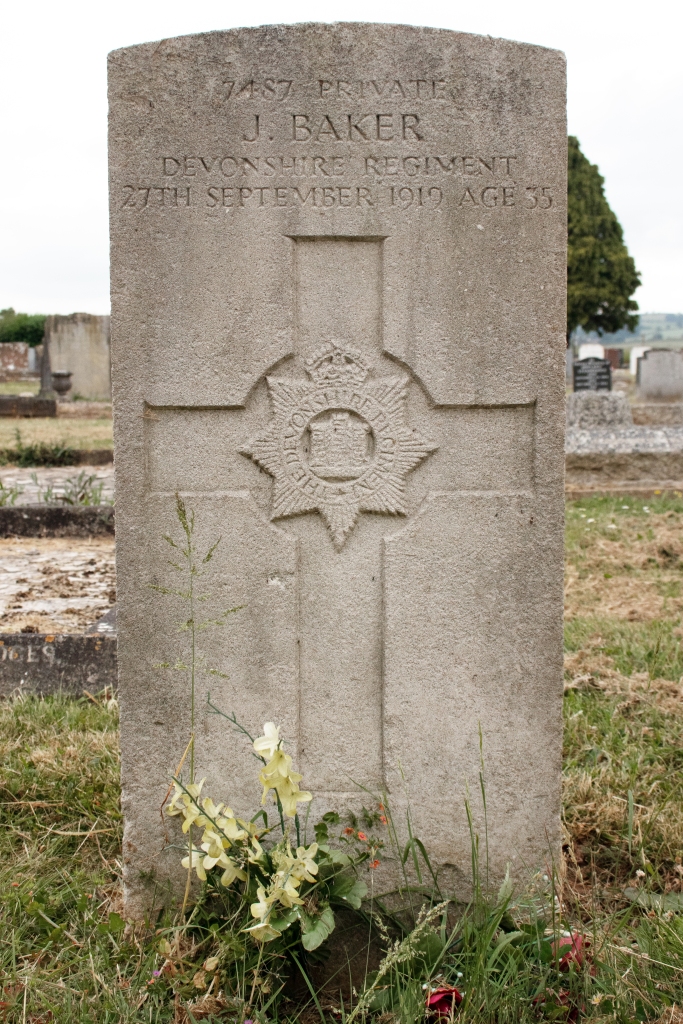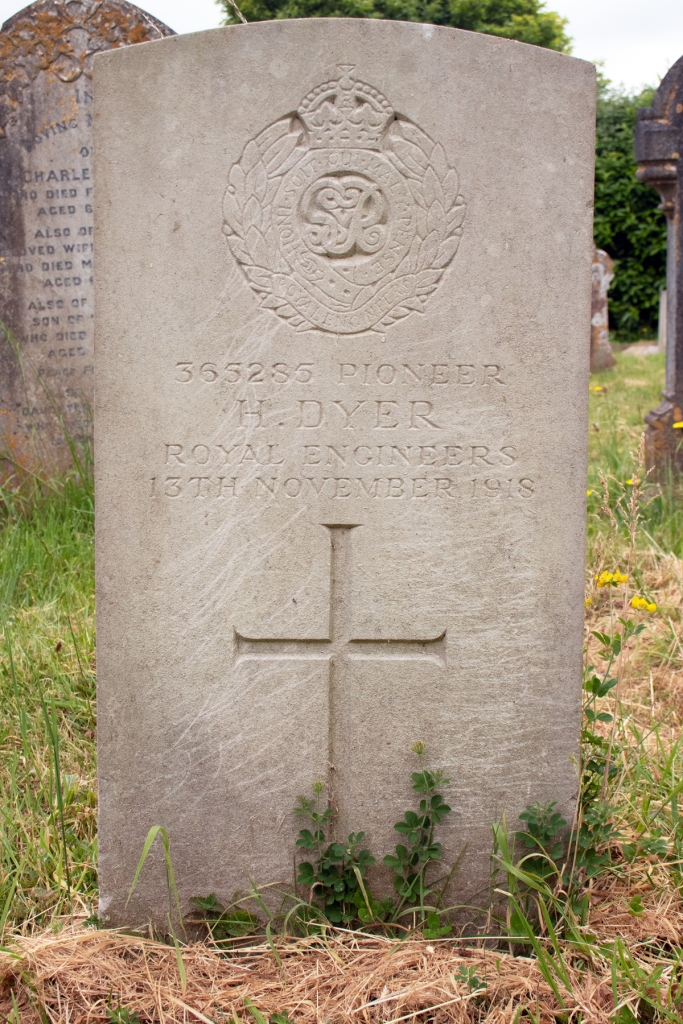
James Baker was born in 1884, and was the youngest of three children to William and Martha Baker. The family were from Kentisbeare in Devon, and tragedy was to strike James early in life, when Martha passed away in 1890, followed by William just five years later.
By the time of the 1901 census, James had moved to the nearby village of Uffculme, where he was employed as a cowman on William Stevens’ farm. At the same time, he was gaining some military experience, volunteering for the Devonshire Regiment. This seemed to offer him a way out, and on 19th October 1903, he formally enlisted in the army.
Private Baker’s service records show that he was 5ft 9ins (1.75m) tall, and weighed 127lbs (57.6kg). He had blue eyes, brown hair and a fresh complexion. James served for 16 months on home soil, but was sent to India in February 1905. He remained there until November 1906, when he returned to England’s shores once more.
James was transferred to the Army Reserve at this point, and returned to farm labouring. He found work in Somerset and, on 31st December 1910, he married Clara Pike. She was the daughter of a farm labourer, and the following year’s census found the newlyweds living with Clara’s widowed father, George, in Tapper’s Lane, North Petherton. James and Clara had a daughter, Clara, who was born in July 1912.
When war came to Europe, James was mobilised once more, and was assigned to the 2nd Battalion in the Devonshire Regiment. Within weeks of conflict erupting, he was in France, remaining there for six months. Over the next four years, Private Baker had two further tours of duty in France, as well as spending considerable time on the Home Front. He had a number of bouts in hospital, suffering from rheumatism, particularly in the winter months.
In the spring of 1918, Private James was caught up in the actions of Villers-Bretonneux, to the east of Amiens. He was badly wounded in the chest and abdomen, and medically evacuated to Britain. He was admitted to the 3rd Western General Hospital in Cardiff, where he spent time recovering. He was declared unlikely to be fully fit for war service, and, on 5th August 1918, he was formally discharged from military duty.
At this point, James’ trail goes cold. He returned to Somerset, and settled back into family life with his wife, daughter and son, Sidney, who had been born in 1915. James passed away at home, through causes unknown, on 27th September 1919, at the age of 35 years of age.
James Baker was laid to rest in the peaceful North Petherton Cemetery, within walking distance from the family home.





















